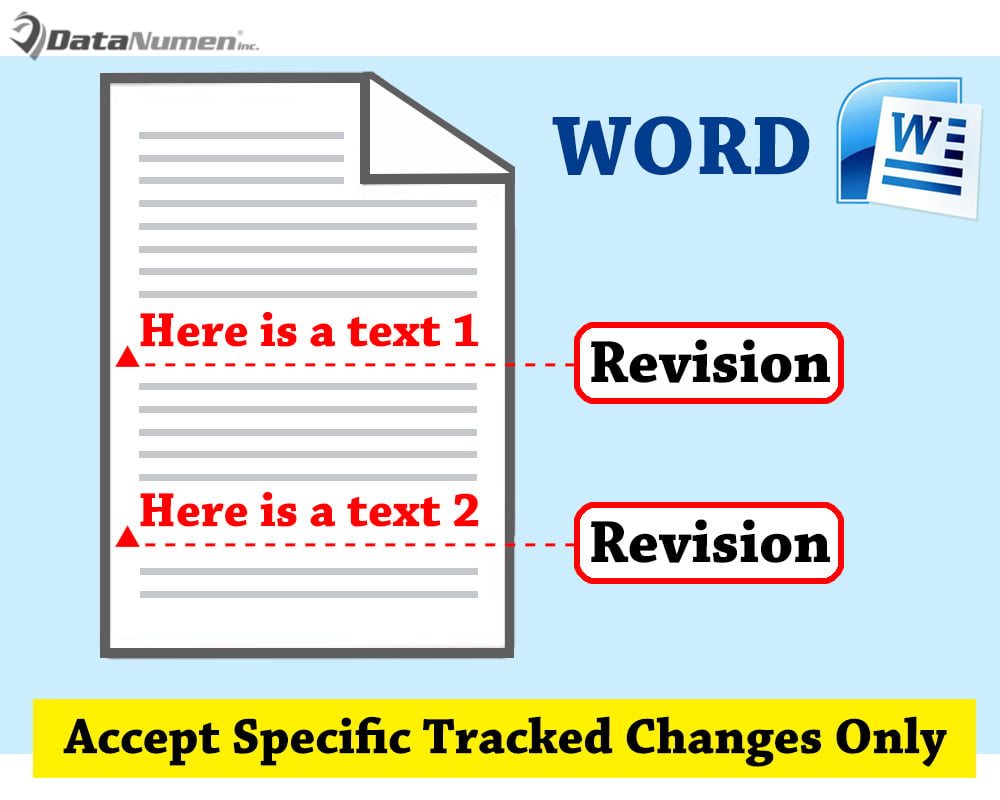
Inserted row whose insertion has been tracked as a revision. This element specifies that the parent table row shall be treated as an The first paragraph mark specifies that this paragraph mark was deleted,Īnd this deletion was tracked as a revision. The del element on the run properties for This revision is represented using the following WordprocessingML: If the physical character delimiting the end of the first paragraph is deleted and this change is tracked as a revision, the following will result: This element specifies that the paragraph mark delimiting the end of a paragraph within a WordprocessingML document shall be treated as deleted (in other words, the contents of this paragraph are no longer delimited by this paragraph mark, and are combined with the following paragraph-but those contents shall not automatically be marked as deleted) as part of a tracked revision.Ĭonsider a document consisting of two paragraphs (with each paragraph delimited by a pilcrow ¶): The following information from the ISO/IEC 29500 specification The element specifies that there was a revision to the paragraph properties at 01-01-2006 by Samantha Smith, and the previous set of paragraph properties on the paragraph was the null set (in other words, no paragraph properties explicitly present under the element). This revision would be specified using the following WordprocessingML markup. The attributes of this element contain information about when this revision took place (in other words, when these properties became a "former" set of paragraph properties).Ĭonsider a paragraph in a WordprocessingML document which is centered, and this change in the paragraph properties is tracked as a revision. The child element of this element contains the complete set of paragraph properties which were applied to this paragraph before this revision. This element stores this revision as follows:

This element specifies the details about a single revision to a set of paragraph properties in a WordprocessingML document. *pPrChange (Revision Information for Paragraph Properties)

The following information from the ISO/IEC 29500 specification introduces the ParagraphPropertiesChange element ( pPrChange).
ACCEPT ALL FORMATTING CHANGES IN WORD CODE
In the following sections, you read about three elements that are used in the code to change the paragraph contents, mainly, (Revision Information for Paragraph Properties), (Deleted Paragraph), and (Inserted Table Row) elements. When you accept a revision mark, you change the properties of a paragraph either by deleting an existing text or inserting a new text. The container for the block level structures such as paragraphs, tables, annotations and others specified in the ISO/IEC 29500 specification. The root element for the main document part. The following table lists the class names of the classes that correspond to the document, body, p, r, and t elements. You will find these classes in the namespace. Using the Open XML SDK 2.5, you can create document structure and content using strongly-typed classes that correspond to WordprocessingML elements. The following code example shows the WordprocessingML markup for a document that contains the text "Example text." The r stands for run, which is a region of text with a common set of properties, such as formatting. A paragraph contains one or more r elements. The basic document structure of a WordProcessingML document consists of the document and body elements, followed by one or more block level elements such as p, which represents a paragraph. Because the WordprocessingDocument class in the Open XML SDK automatically saves and closes the object as part of its System.IDisposable implementation, and because Dispose is automatically called when you exit the block, you do not have to explicitly call Save and Close as long as you use using. The block that follows the using statement establishes a scope for the object that is created or named in the using statement, in this case wdDoc. It ensures that the Dispose method (internal method used by the Open XML SDK to clean up resources) is automatically called when the closing brace is reached. The using statement provides a recommended alternative to the typical. Using wdDoc As WordprocessingDocument = WordprocessingDocument.Open(fileName, True)

using (WordprocessingDocument wdDoc = WordprocessingDocument.Open(fileName, true)) To do so, you open the word processing file with the specified fileName by using the Open(String, Boolean) method, with the Boolean parameter set to true in order to enable editing the document. To open an existing document, you can instantiate the WordprocessingDocument class as shown in the following using statement. The following assembly directives are required to compile the code in this topic.
ACCEPT ALL FORMATTING CHANGES IN WORD HOW TO
This topic shows how to use the Open XML SDK 2.5 for Office to accept all revisions in a word processing document programmatically.


 0 kommentar(er)
0 kommentar(er)
